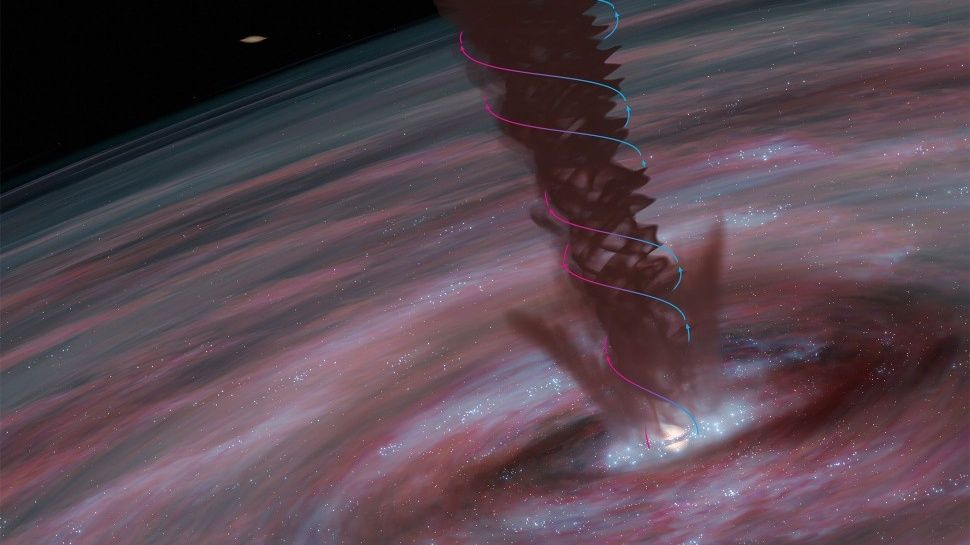Magnetic vortices may help feed supermassive black holes. Here's how
By Keith Cooper published yesterday
This could explain why some black holes are able to grow to millions or billions of times the mass of our sun.

An illustration of a purple and gray disk of gas and dust. In the center, a swirling jet protrudes upward.
An artist's impression of the spiraling magnetic wind around the supermassive black hole at the center of the galaxy ESO320-G030. The colored lines show the rotational motion of the wind (blue towards us, red is away from us). (Image credit: M.D. Gorski/Aaron Geller/Northwestern University/CIERA.)
It's a bit of a myth that black holes pull everything in. Much of the matter that finds itself falling towards the black hole is actually spat back out, thanks to powerful magnetic fields that are able to levitate charged particles out of a black hole’s accretion disk and accelerate them away.
For a long time, the assumption was that this material flowed radially out from the vicinity of black hole, either through a piercing jet that is collimated by magnetic fields, or material lifted up by outflows of radiation emanating from the hot disk. However, there's always been a bit of a paradox at the heart of this theory: If the environment immediately around black holes is adept at removing material from danger, how are supermassive black holes able to feed on enough matter to grow to their gargantuan masses of millions or even billions of times the mass of our sun?
Now, observations of the active galaxy ESO320-G030, which is located 120 million light years away, may have just provided the answer. Basically, a spiraling magnetic vortex has been found whirling around a supermassive black hole in a distant galaxy, creating conditions that allow the black hole to feed ravenously.
Using the Atacama Large Millimeter/submillimeter Array (ALMA) in Chile, astronomers led by Mark Gorski of Northwestern University, USA, detected hydrogen cyanide gas being blown by magnetohydrodynamic outflows — in other words, magnetic winds. The hydrogen cyanide isn't particularly important per se, but by representing the rest of the molecular gas in the system, it acts as a proxy that ALMA can detect.
More:
https://www.space.com/magnetic-vortices-supermassive-black-hole
